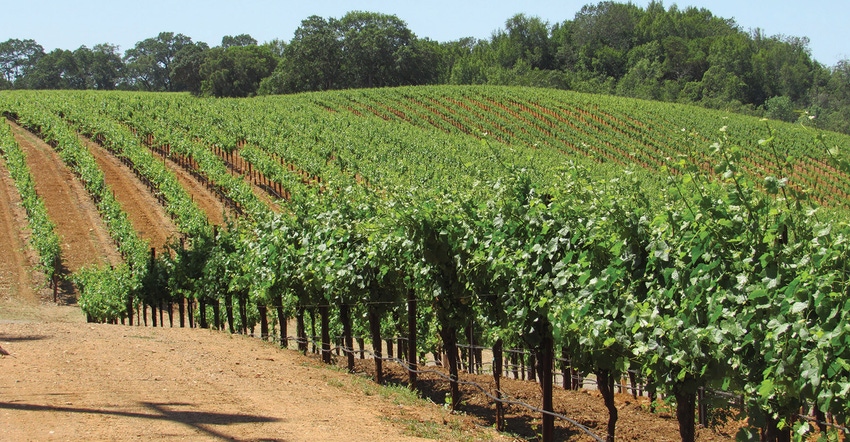
It’s kind of like Goldilocks and the Three Bears story where things are either too hot or too cold. In Jeff Bitter’s case, as president of the 500-member Allied Grape Grower group, it’s too many. Grapes, not members.
Four good back-to-back production years lead up to the 2020-2021 short crop that ultimately helped settle things into a somewhat balanced situation. “Stable with a chance of oversupply,” he calls the 3.6 million tons of crush last year, which was followed by a year of modest plantings. “For 2022, we’re about sold out and actively looking for more.”
He forecasts not more than 18,000 acres of vineyard will ultimately be planted this year, roughly equal to the amount that will be removed via natural attrition.
“That’s a good sign,” he said. In a presentation on Consumption Trends in the California Winegrape Market, he offered a forecast for bearing acreage over the 2022-23-24 time frame that showed a no-growth graph at about 580,000 acres (while the bearing acreage target range was 540,000-560,000 acres). Estimated crush over those three years was also flat at about 4 million tons.
“We’ve shorted ourselves into balance to the point where the current state feels ‘comfortable’, although supply uncertainties and changing consumer behavior still exist.”
Other good signs were presented at the group’s annual membership meeting held recently in Fresno with Emily Rooney, president of the Agricultural Council of California as keynote speaker. The public policy association leader, who represents 15,000 farmers statewide, discussed several high-level issues from Proposition 1 water storage project progress to zero emission vehicles, lauding some and encouraging faster deadlines on others.
“Prop 1, which passed several years ago, is starting to see momentum,” she told the group. “Seven projects have been funded or partially-funded by the California Water Commission, four groundwater projects and three above-ground storage projects, with the anticipation that some will be operational by 2029-2030.”
Water projects’ future
So, while the timeline is underway and counting down, is it moving fast enough? “That’s a fair question,” she replied.
“Of course, we’d like to see these projects move more expeditiously, but I’m just happy some projected completion dates have been announced, which we had not seen before. It’s a long tunnel, but I do feel like there’s a light at the end of that tunnel. If I could wave a magic wand and move the timeline up, I assure you I would.”
Other items of interest to grape growers involved rolling applications pertaining to the agricultural burning question in the San Joaquin Valley Air Pollution Control District. “I want folks to know there is $180 million involved for applications to implement alternatives to ag burning. The money’s out there.”
Another topic involved ZEV or zero emission vehicles. “Of all the important priorities we’re dealing with in California agriculture, implementation of ZEVs is right behind water projects and I don’t want agriculture to get caught flat-footed when the implementation timelines comes about.”
Because ACC is a policy organization, the subject of politics came up in her speech. “We’re likely to see a shift of one party to another in Congress — and in California we expect a lot of legislative turnover as office holders retire or step down. My message to the grape growing audience was, ‘Get Engaged. Stay Engaged’
About the Author(s)
You May Also Like




